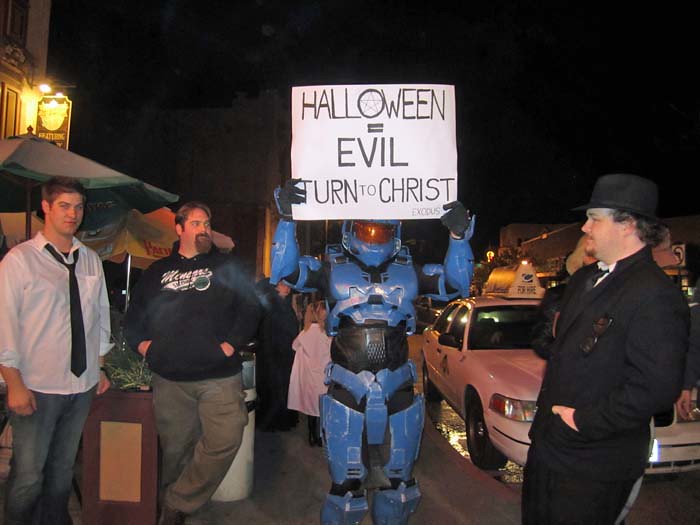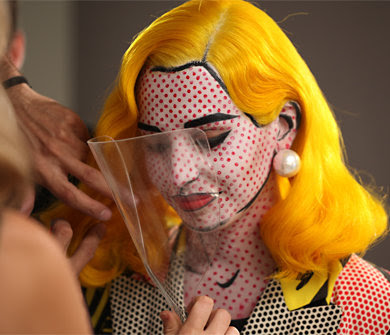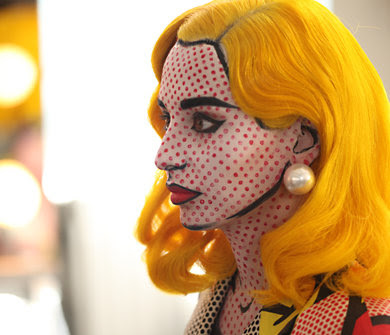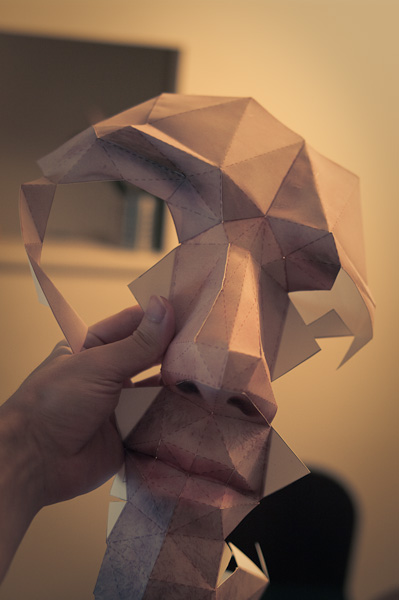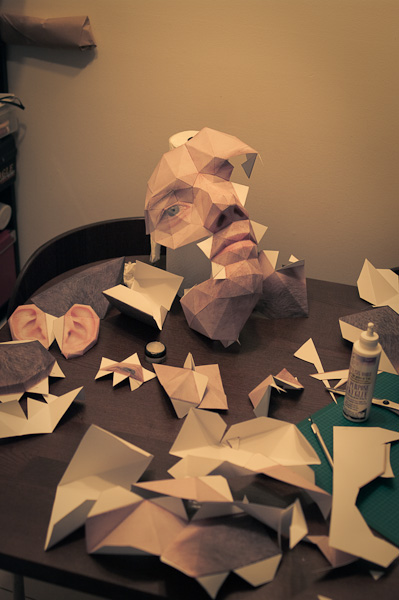Halloween is a big deal on our street. It’s bigger than Christmas. Probably. This year two of our three kids are obsessed with Harry Potter, so will be dressed up as Hermione, and Professor Lupin (in werewolf form, thanks easy book week costume from Spotlight).
Harry Potter was a favourite series in my childhood, from the moment the first book was introduced to our family by our cool aunty from Canada. I had a running competition with one of my sisters to see who could re-read the early books in the series the most times. But my wife, Robyn, is meeting Harry Potter for the first time as an adult, trying desperately to keep up with our oldest daughter who has now ploughed through the series multiple times. Harry Potter was on the banned book list at her primary school.
Halloween is a pretty fraught holy-day for Christians; it’s obviously become a popular and commercially successful venture here in Australia, after decades of resistance, and is apparently becoming an even bigger deal in the United States. In the spirit of the ‘Satanic Panic’ of old, the sort that involved widespread conspiracy theories and loopy ideas about backwards masking in rock music it’d be easy to see a dark and sinister agenda behind the rising popularity of a festival that seems to not just glorify the supernatural realm, but a sort of ghoulish supernatural realm — the demonic… This isn’t helped by groups who’re harnessing ‘the darkness’ to make a political point. Here in Queensland there’s a group of ‘satanists’ who are holding a ‘dark mass’ tonight, to mark Halloween. There’ve been prayer chains and emails sent out to and from different Christian organisations and their mailing lists raising awareness about this little chapter of darkness. However, it seems the guy running the show is employing a fairly dark form of black humour, the blackest of black humour, to make a political point about religious freedom legislation in Australia that protects Christians.
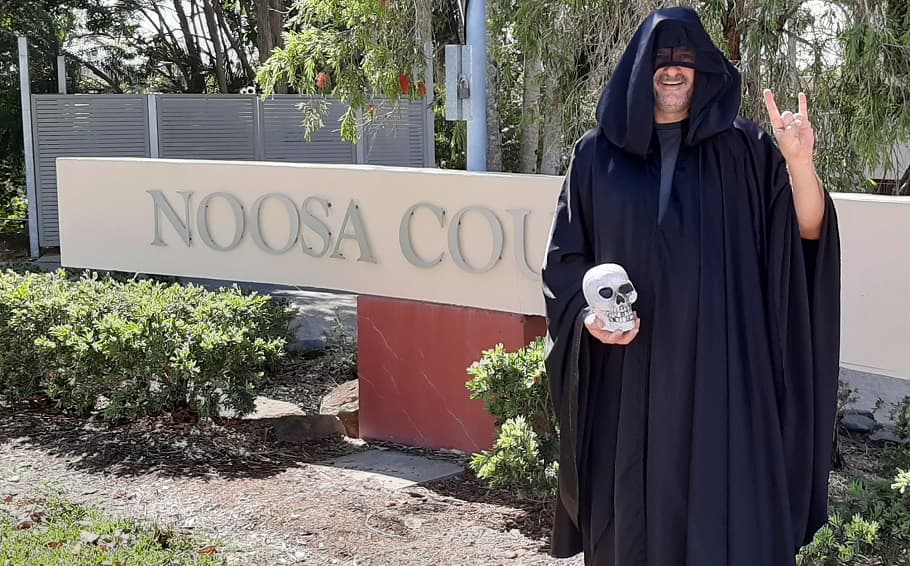
His garb is a little, umm, underwhelming, and obviously from the discount section at a costume shop.
He’s also been standing outside Brisbane schools recently trying to drum up interest for Satanic religious instruction classes. His little chapter of ‘satanists’ sprang up demanding the same legal protections and privileges that Christians enjoy — and they’re loving the ‘hypocrisy’ of Christians trying to shut down their Halloween eve gathering. When you don’t believe a supernatural realm exists, playing around with Satan and the demonic seems like a bit of a cheap thrill; some harmless fun even, and an easy way to score points at the expense of Christian gullibility and a genuine degree of hypocrisy when we act to limit the religious freedom of another ‘religious group.’
In diagnosing the modern world with its smorgasbord of religious and spiritual views, philosopher Charles Taylor makes two interesting points that might help us understand something of the appeal of Halloween, not just as a commercial venture, but as a chance to nod to the supernatural, and even the darkness. The first is that our modern world mostly assumes that the supernatural realm is gone; we operate in a closed off universe where we can poke fun at the religious without fear, mocking not just the godly, but the gods themselves (and Satan and demons too). That seems perfectly reasonable for people to do; and yet, the second idea from Taylor is that lots of us actually feel haunted by our decision to close ourselves off to the idea of the Spiritual Realm, and stories about ghosts and magic are not just a product of mischief but a genuine hauntedness; the little chills we get when playing around with the darkness, or turning towards the supernatural he calls ‘frisson’ — a word awkwardly meaning ‘skin orgasm’ — Taylor sees these thrills and chills maybe pointing us to an actual truth; a sign that in our probing around the edges of reality we might actually be acknowledging something that’s really real. He observes that we now go to movies (or read books) like Harry Potter for these thrills, but in doing so we’re venturing into territory that once terrified our ancestors. For them witches, demon possession, and Satan were genuinely terrifying forces, and now we turn to these forces for giggles… sometimes. For most of us, most of the time, “science” has negated “this whole dimension of dark forces,” Taylor says this has calmed our fears but we remain fascinated with the idea of both dark forces and their counter-forces so we recreate them in popular stories, films, and art to “give ourselves frissons, while still holding the reality at bay.” For Taylor, the path back to enchantment — to a magical or supernatural reality — runs, in part, through these sorts of stories being taken seriously.
This is something that fantasy writers like Tolkien, Lewis, and Harry Potter’s J.K Rowling have embraced quite deliberately. In an interview about the religious (not just supernatural) themes of Harry Potter, Rowling says the books represent her own grappling with the idea of death and an afterlife. Rowling, by her own account, is a regular church goer, and the books Christian themes aren’t as buried as Tolkien’s, or as overt as Lewis’s, but they’re there, quite explicitly. Especially in the final book in the series, Harry Potter and The Deathly Hallows. In an interview about the religious themes in her books, Rowling said:
“The truth is that, like Graham Greene, my faith is sometimes that my faith will return. It’s something I struggle with a lot. On any given moment if you asked me [if] I believe in life after death, I think if you polled me regularly through the week, I think I would come down on the side of yes — that I do believe in life after death. [But] it’s something that I wrestle with a lot. It preoccupies me a lot, and I think that’s very obvious within the books.”
It’s not just implicit, either. The Deathly Hallows features a scene where Harry and Hermione have a conversation by the side of his parents’ gravestone; which bears the inscription “The last enemy that shall be destroyed is death,” a quote from 1 Corinthians 15:26. In the graveside conversation Harry and Hermione tease out some of Rowling’s preoccupation with the question:
“Harry read the words slowly, as though he would have only one chance to take in their meaning, and he read the last of them aloud. ‘“The last enemy that shall be destroyed is death” …’ A horrible thought came to him, and with it a kind of panic. ‘Isn’t that a Death Eater idea? Why is that there?’ ‘It doesn’t mean defeating death in the way the Death Eaters mean it, Harry,’ said Hermione, her voice gentle. ‘It means … you know … living beyond death. Living after death.’”
I won’t spoil the story if you haven’t read it; except to say that whether or not life beyond death exists in the enchanted world of Harry Potter is resolved in a way that might land where Rowling herself does…
The Deathly Hallows and Halloween are both interesting cultural artefacts in a world not so certain about life beyond death; a world devoted to staving death off through our scientific efforts, to pretending death isn’t really looming for us all (by pushing our cemeteries out to the margins of our cities, rather than having them surround church buildings that we attend every week), and to turning funerals into celebrations where the body isn’t present. Halloween’s popularity is interesting to observe through the lens provided by Charles Taylor — it’s simultaneously a vastly successful commercial enterprise for our new god of consumerism, a pagan festival of consumption of excess sugar, and ghastly decorations, an odd ‘frisson inducing’ dalliance with ideas that might have once terrified us — the ghostly, ghoulish, or demonic figures wandering the streets demanding we sacrifice our treats less we be ‘tricked’… and maybe, just maybe, an acknowledgement that somewhere at the edge of our consciousness we’re haunted by the loss of belief in a supernatural world — not just in demons and darkness, but in the light — in God himself, and life beyond death.
The word ‘hallow’ means ‘holy’ — to ‘hallow’ something was to make it holy, and the original day was not a day to celebrate the power of the darkness — the ghoulish, the demonic, or the satanic — but its defeat. It was not a day to mock God, but to mock death. Historically, of course, Halloween was “All Hallow’s Eve,” the night before All Hallows, or All Saints, Day — a day when Christians remembered the faithful friends and family who have died. It is a celebration that death has been defeated. The origin of the practice of wearing slightly dark costumes the night before came from a tradition of not fearing death, but mocking it; it was not from a tradition of celebrating Satan and his minions but revealing that they did not have the last laugh; that God himself won a victory over sin, and death, and Satan in the death and resurrection of Jesus. The last enemy to be destroyed is death. And it was.
Which is to say that Christians need not fear Satanic dark mass rituals – no matter how seriously, or otherwise, the people involve take them. The idea of such a mass should not move us to outrage or conniptions, or to fear. Satan is real; but Satan has already been defeated. The dark mass is, for us, a toothless tiger. So too are many of the costumed wild things wandering the streets on All Hallows Eve. Halloween is not evidence the darkness has triumphed over the light, but the way our culture celebrates it is disconnected from its origins, and from a supernatural picture of the universe; since this supernatural picture is closer to our view of reality than a closed off world only observable by science, maybe, just maybe, we should embrace this holiday and shed some light on the darkness?
For those of you reading who aren’t Christians; perhaps the thrills you feel dipping your toes into the supernatural realm once a year — or as you read Harry Potter, or watch ghost stories, are because there’s something realer than real going on. Perhaps when we let death and darkness creep into our lives, in this one night, it might cause us to ask what we’ve lost by pretending, most of the time, that death isn’t an enemy at all. Pushing it to the side so we don’t have to worry about it — and perhaps this night need not be a night of terror for you, or for others, if we grasp hold of the truth that not only is death a real enemy, but death itself has been destroyed, darkness loses. Light wins. Death can be mocked, not simply embraced as an inevitability.
The trick is, if the supernatural realm is real, that doesn’t just mean God is real, but the devil is too — and the dark joke might end up being on the Satanists with their black mass, who’ve totally misread the situation… by thumbing their nose not just at God, and Satan — in their politically motivated mockery — the Bible suggests they’re in a pretty dark place. One part of the Bible describes the situation facing those who don’t die trusting in Jesus, it says:
“As for you, you were dead in your transgressions and sins, in which you used to live when you followed the ways of this world and of the ruler of the kingdom of the air, the spirit who is now at work in those who are disobedient. All of us also lived among them at one time, gratifying the cravings of our flesh and following its desires and thoughts.” — Ephesians 2:1-3
The ‘ruler of the kingdom of the air’ — that’s Satan. He’s the one who loves people kept in darkness, and death, and rejecting God. The little black mass speaks truer than those participating know about their own position in the supernatural universe. Not only is the Satanist honcho wearing a cheap, not particularly scary costume, he’s dabbling in some darkness that might be beyond him.
So. We’ll have a couple of Harry Potter’s companions treading the streets this weekend; knowing, as they do, that the last enemy to be destroyed is death, and that death was destroyed by Jesus. Our family will be thankful that those who have gone before us trusting Jesus are safe and secure and victorious; not just in the grave, because the supernatural, heavenly, realm is real, and death and darkness can be mocked from a position of security… Or, as that same bit of the Bible quoted on the Potters’ grave finishes, when talking about the hope that gave meaning to All Hallows Day:
When the perishable has been clothed with the imperishable, and the mortal with immortality, then the saying that is written will come true: “Death has been swallowed up in victory.”
“Where, O death, is your victory?
Where, O death, is your sting?


